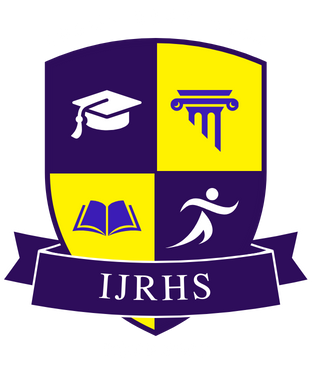![]()
Roshni Kumari
Independent Researcher
India
Abstract
This study offers an in-depth exploration of the pedagogical integration of folk tales within multilingual school contexts in Karnataka, India, where linguistic diversity encompasses Kannada, Tulu, Konkani, Kodava, Urdu, and English. Building upon prior research that underscores the benefits of culturally responsive pedagogy, this investigation probes how systematic incorporation of folk narratives can enhance linguistic competencies, foster intercultural understanding, and bolster student engagement. Employing a mixed-methods framework, data were gathered over a three-month intervention across six Grade 5 classrooms—two in urban English-medium private schools, two in semi-urban government Kannada-medium schools, and two in rural aided schools serving Tulu- and Kodava-speaking communities. Quantitative measures comprised pre- and post-intervention assessments of vocabulary recognition (40-item task) and narrative retelling (standardized rubric scoring for coherence, fluency, and lexical variety). Qualitative insights derived from twenty structured classroom observations, six semi-structured teacher interviews, and twelve student focus groups illuminated the pedagogical processes and affective responses associated with folk-tale instruction. Results revealed statistically significant gains in vocabulary (from a mean of 58.4% to 72.7%, p < .001) and narrative skills (coherence scores rising from 2.8 to 4.1; lexical variety from 3.0 to 4.2). Moreover, thematic analysis uncovered enhanced student motivation, stronger peer collaboration across language groups, and heightened cultural pride. Conversely, teachers identified challenges related to story selection, translation fidelity, time management within rigid curricula, and resource constraints—particularly in urban settings less familiar with local narratives.
Keywords
Folk Tales, Multilingual Pedagogy, Karnataka, Language Development, Cultural Identity
References
- Bozhong, L. (2017). Challenges in integrating cultural narratives in language classrooms: A case study of provincial schools. Journal of Multilingual Education, 12(3), 145–160.
- Braun, V., & Clarke, V. (2006). Using thematic analysis in psychology. Qualitative Research in Psychology, 3(2), 77–101.
- Cummins, J. (2001). Bilingual children’s mother tongue: Why is it important for education? Sprogforum, 7(19), 15–20.
- Deshpande, M. (2018). Folk narratives and bilingual literacy: Marathi–English classroom practices. Language and Education, 32(5), 473–486.
- Egan, K. (1986). Teaching as Storytelling: An Alternative Approach to Teaching and Curriculum in the Elementary School. University of Chicago Press.
- García, O. (2009). Bilingual Education in the 21st Century: A Global Perspective. Wiley-Blackwell.
- García, O., & Wei, L. (2014). Translanguaging: Language, Bilingualism and Education. Palgrave Macmillan.
- Heath, S. B. (1983). Ways with Words: Language, Life, and Work in Communities and Classrooms. Cambridge University Press.
- Isbell, R., Sobol, J., Lindauer, L., & Lowrance, A. (2004). The effects of storytelling and story reading on the oral language complexity and story comprehension of young children. Early Childhood Education Journal, 32(3), 157–163.
- Ladson-Billings, G. (1995). Toward a theory of culturally relevant pedagogy. American Educational Research Journal, 32(3), 465–491.
- Nippold, M. A., Hesketh, L. J., Duthie, J. K., & Mansfield, T. C. (2005). Conversation versus expository discourse: A study of syntactic development in children, adolescents, and adults. Journal of Speech, Language, and Hearing Research, 48(1), 85–98.
- Nieto, S. (2002). Affirming Diversity: The Sociopolitical Context of Multicultural Education. Allyn & Bacon.
- Payton, J. W., Wardlaw, D. M., Graczyk, P. A., Bloodworth, M. R., Tompsett, C. J., & Weissberg, R. P. (2000). Social and emotional learning: A framework for promoting mental health and reducing risk behavior in children and youth. Journal of School Health, 70(5), 179–185.
- Rao, A. (2016). Multilingualism and language policy in Karnataka: Implications for education. Indian Journal of Applied Linguistics, 42(1), 52–68.
- Sharma, P., & Mohan, R. (2013). Mother tongue instruction and second language acquisition: Theory and practice. International Journal of Bilingual Education and Bilingualism, 16(2), 151–167.
- Telikicherla, R., & Narayana, H. S. (2015). Preserving oral traditions: Documenting folk tales of Karnataka. South Asian Folklore Studies, 34(4), 89–112.
- Thomas, W. P., & Collier, V. P. (2002). A national study of school effectiveness for language minority students’ long-term academic achievement. Center for Research on Education, Diversity & Excellence.
- Vijayan, J. (2019). Role of storytelling in enhancing classroom participation: A study in Kannada medium schools. Educational Review, 71(2), 214–230.
- Woolley, G. (2007). The role of storytelling in the language classroom. Language Teaching, 40(4), 536–550.
